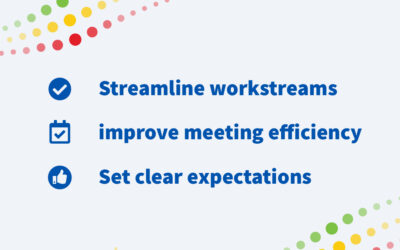Creating a School Improvement Plan is a big investment of time, effort, and expertise from school leaders, community members and other stakeholders. But by itself, your School School Improvement plan is just a starting point. The real endpoint is driving student outcomes – you have to implement your plan with high fidelity for students to benefit.
There are ample resources that can be used to create an improvement plan but very few educators have any formal training in creating the systems used to implement, monitor, and respond to improvement plan efforts. Today, School and District leader training for implementing programmatic changes is almost entirely trial and error on the job training.
The adaptive challenges of actually implementing your school improvement plan are incredibly difficult and require discipline, visibility, vulnerability and collaboration – all while the clock is ticking – especially for at risk schools.
As educators who have deeply engaged with school improvement, both with our own schools and partner schools, we know that most school improvement plans fall short because the essential link between planning, implementation and student outcomes is broken. What we mean by this is that educators are really good about setting goals and defining the strategies to reach those goals. But then school happens and implementation often falls to the wayside.
School Improvement plans require changes to adult behaviour and without systems in place to reinforce those changes, educators will revert to doing what they had been doing – which means not actually implementing the School Improvement Plan.
Why Improvement Plans Fail
RespondAbility’s VP of Educator Engagement discusses how leaders can effectively empower their teams to avoid a failed implementation
This article will share the pitfalls you should be aware of and several educational videos that will explain how systems are needed to avoid those pitfalls.
Why School Improvement Plans Fail – Pitfalls to Avoid
Don’t write the plan and “put it on a shelf”. Schools are highly dynamic and School Improvement plans must be adaptive and responsive to the ongoing successes, challenges, and failures of implementation. A plan that can’t respond to changes in students’ or teachers’ needs gets stale almost as soon as it is written.
Commitment comes from Engagement. Teachers and Administrators must be fully committed to how the plan will improve student outcomes. And commitment is driven through inclusion. Teachers and Administrators not only need to be engaged in the creation of the plan, they need to be engaged with the ongoing monitoring of the plan and the inevitable course corrections needed to successfully reach the plan’s goals.
You have to separate Cause from Effect. Educators can control their actions, but – and this is very difficult for individuals with traditional and ineffective views on accountability – educators cannot directly control student outcomes. A teacher can control how she teachers, and how she teaches will obviously have an impact on student learning but unless there is a separation of cause (teaching) and effect (learning) then there will be no way to discern effective from ineffective causes.
How to Correlate Efforts to Student Outcome Goals
This short video explains why monitoring metrics increases accountability, focus and results
Communication must be frequent, multi-directional, and easy. Formal, summative quarterly reports to a state or district is an exercise in compliance not engagement with a school improvement plan. The work of School Improvement happens every day, not quarterly. Progress reporting should be thought of as a formative process that is integrated into the weekly or bi-weekly rhythm of the school.
About RespondAbility
RespondAbility is a cloud based progress management platform built by educators for educators that helps superintendents, principals and teachers implement their school and district improvement plans and know what learning impact their efforts are having.




